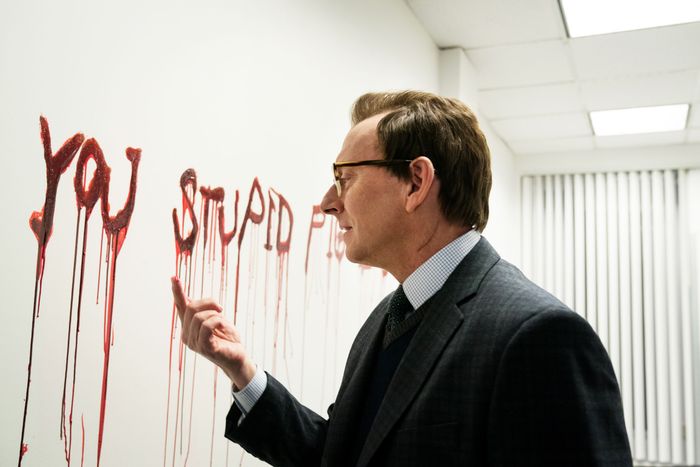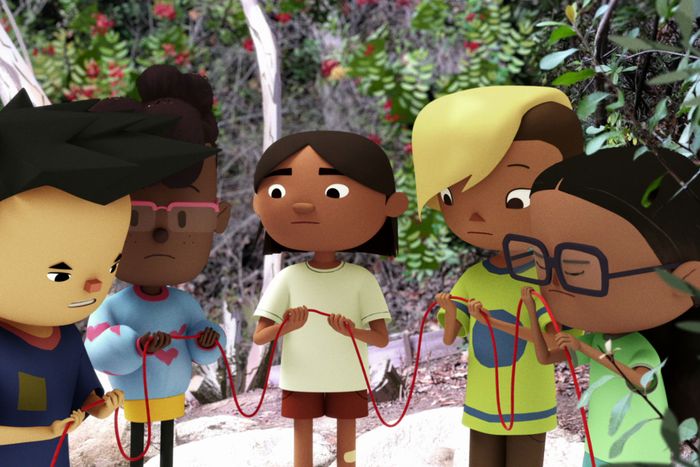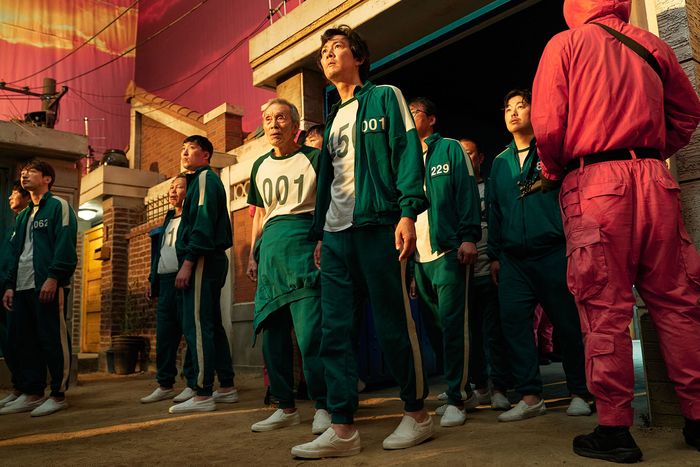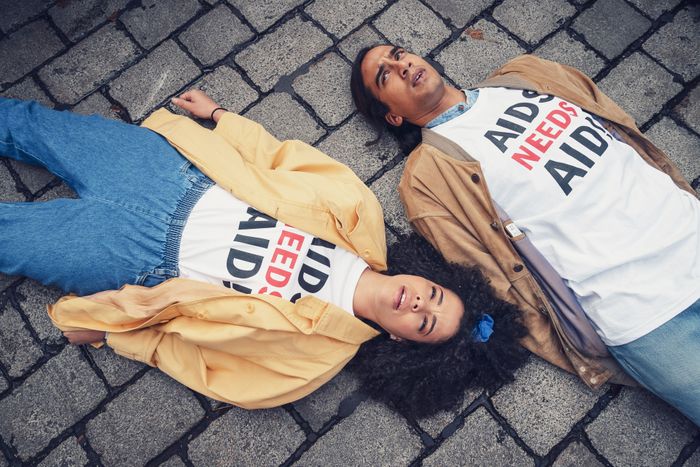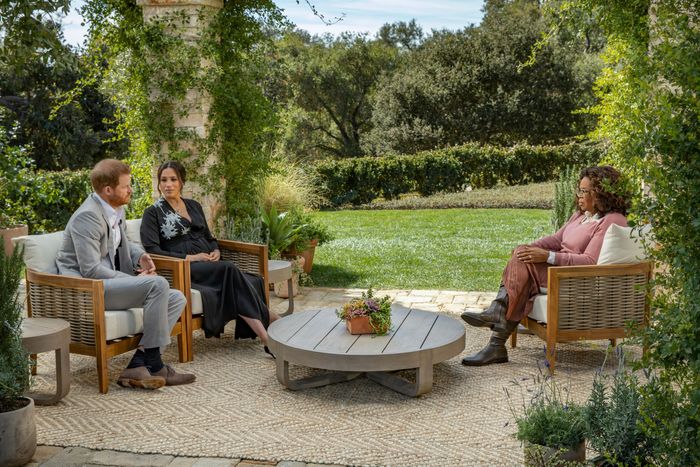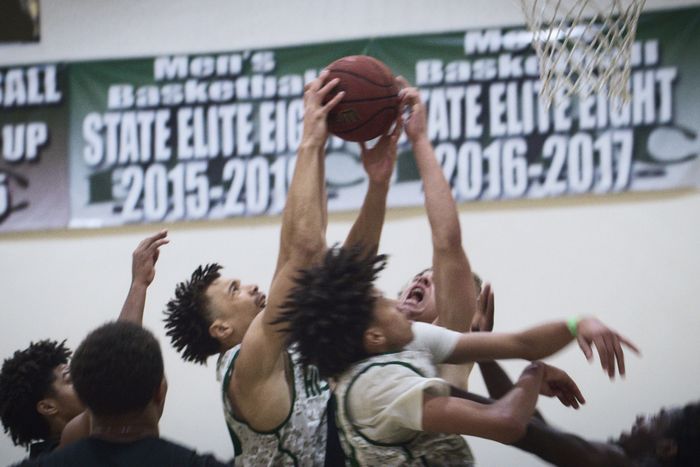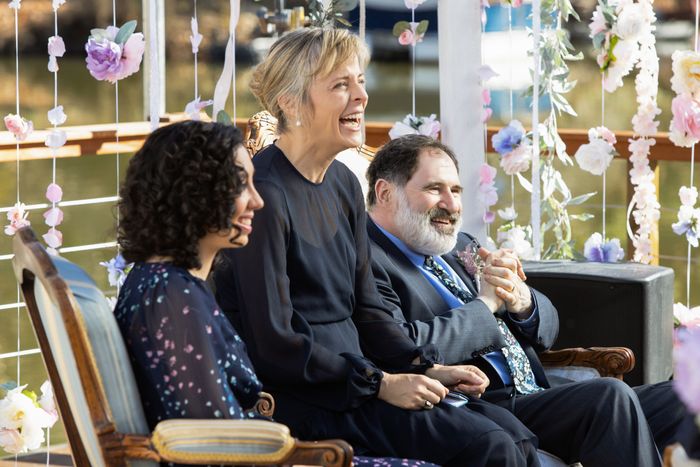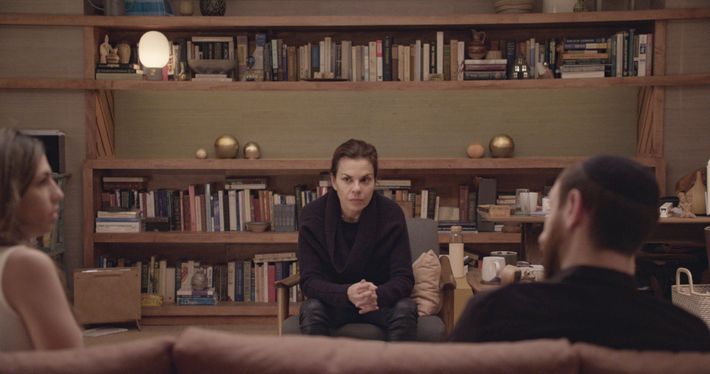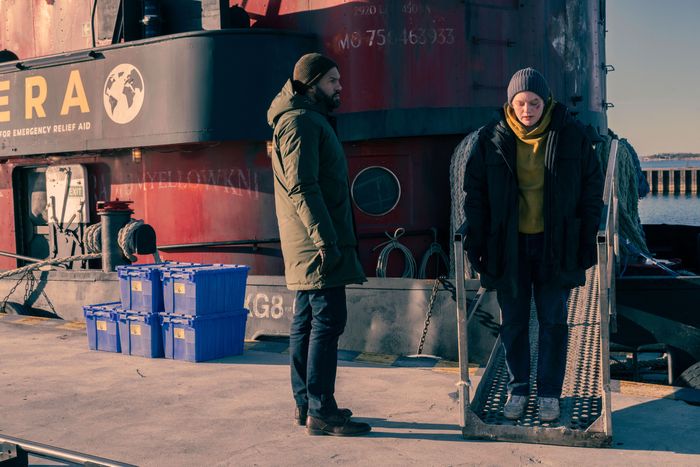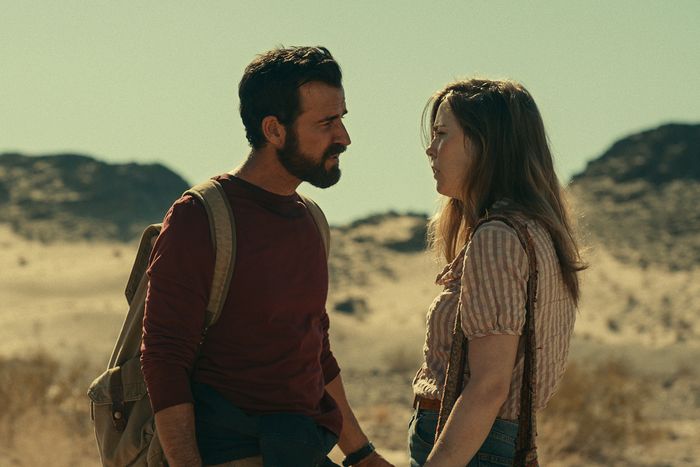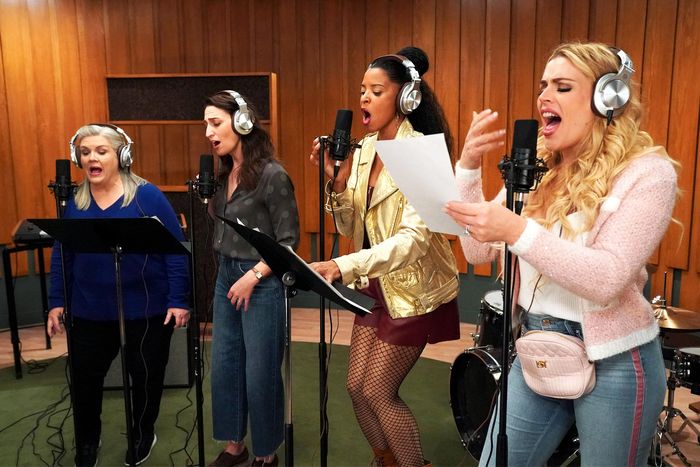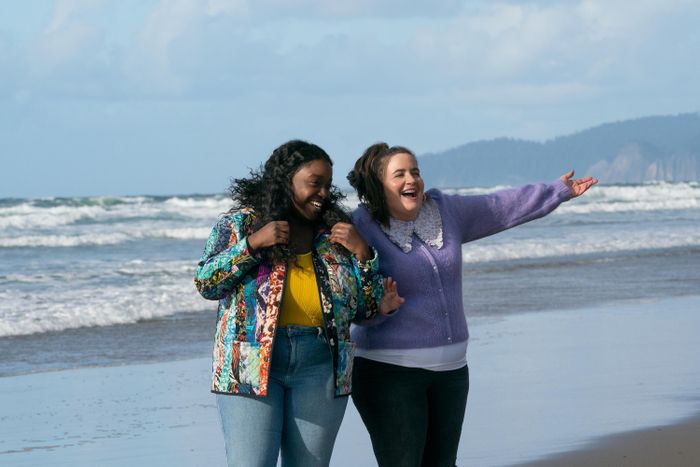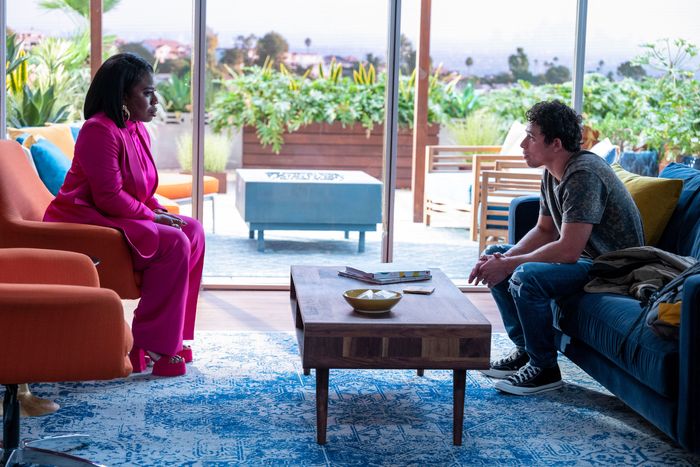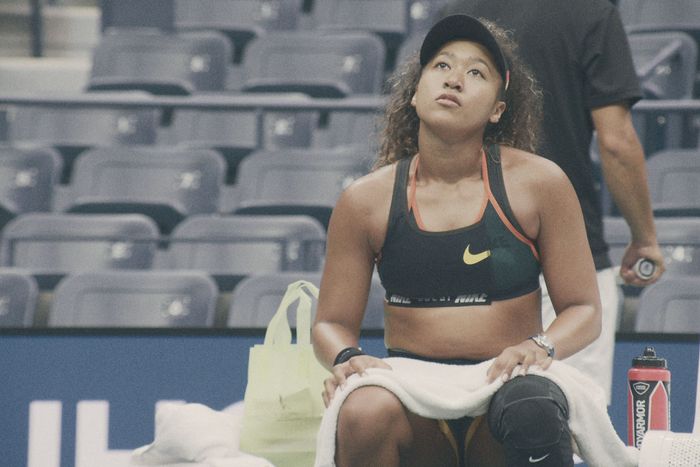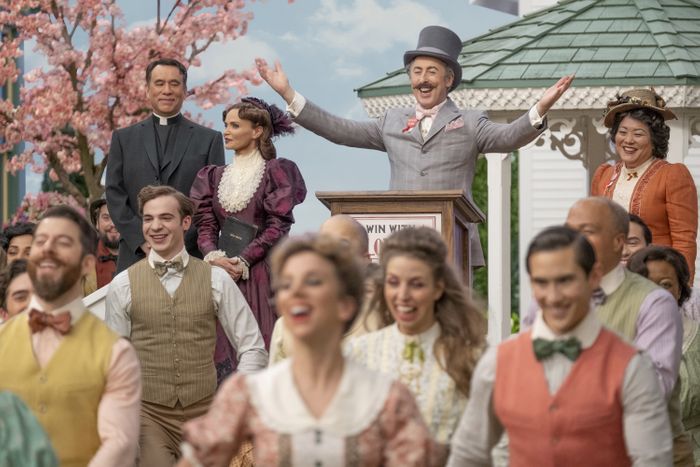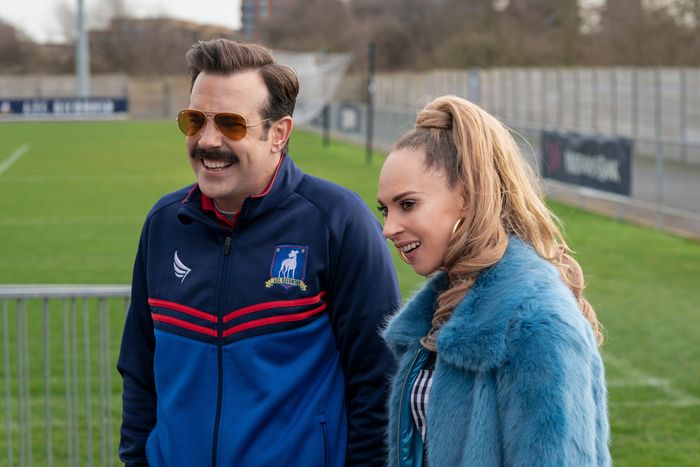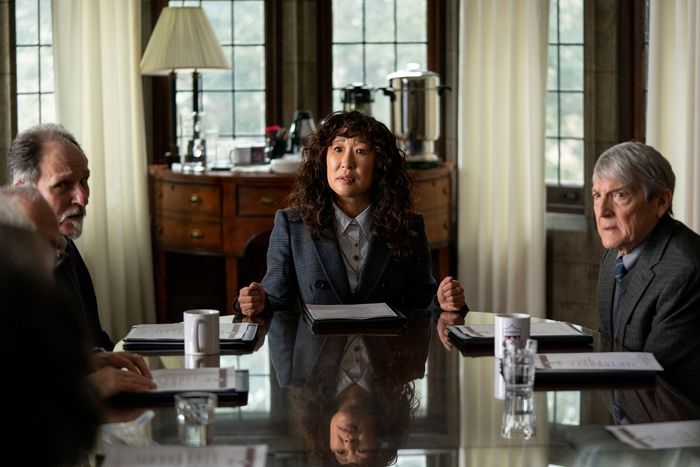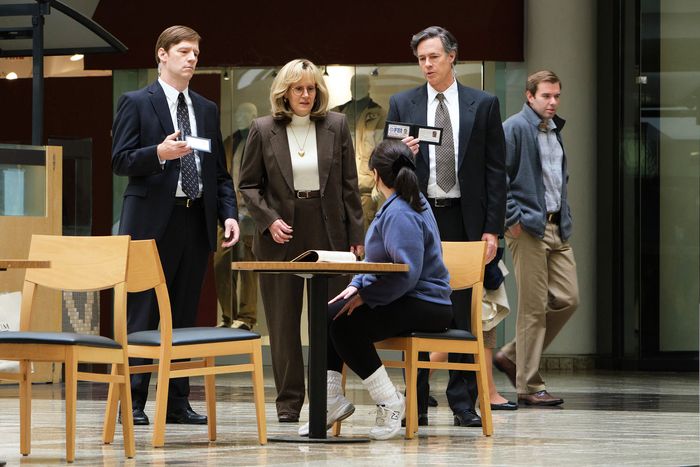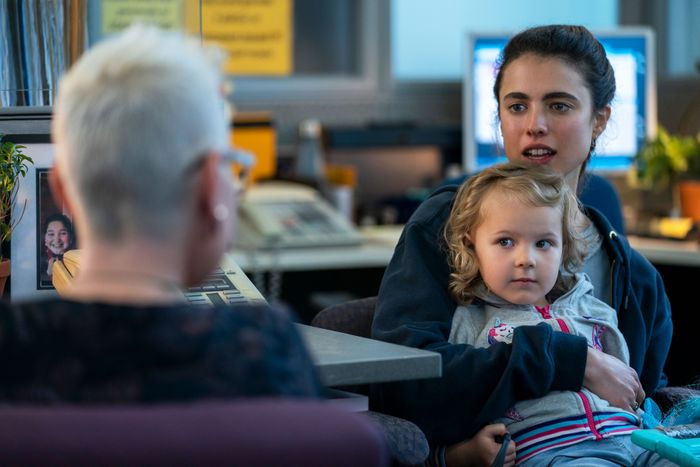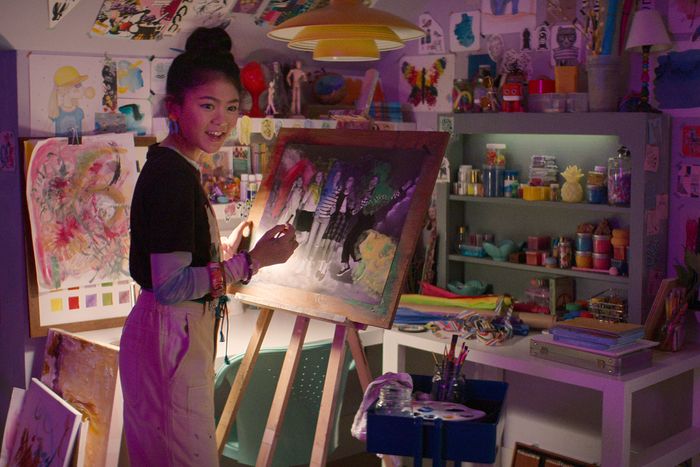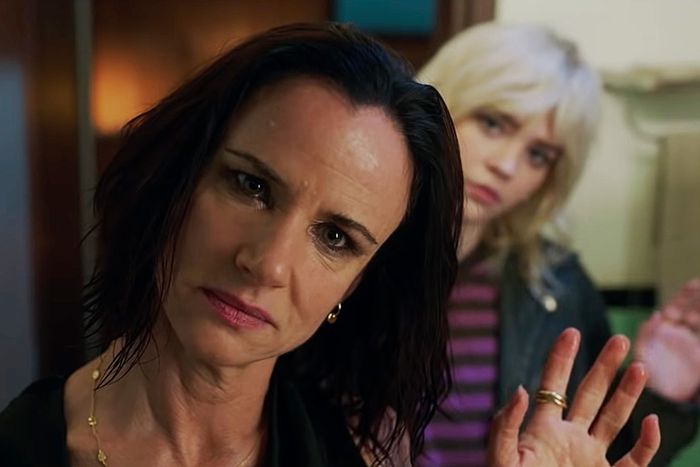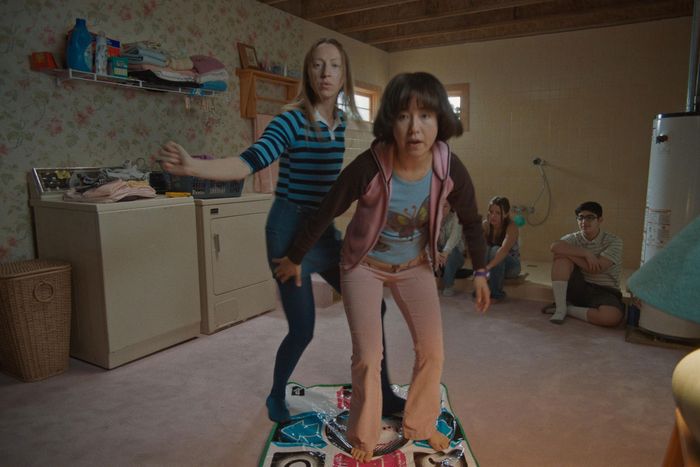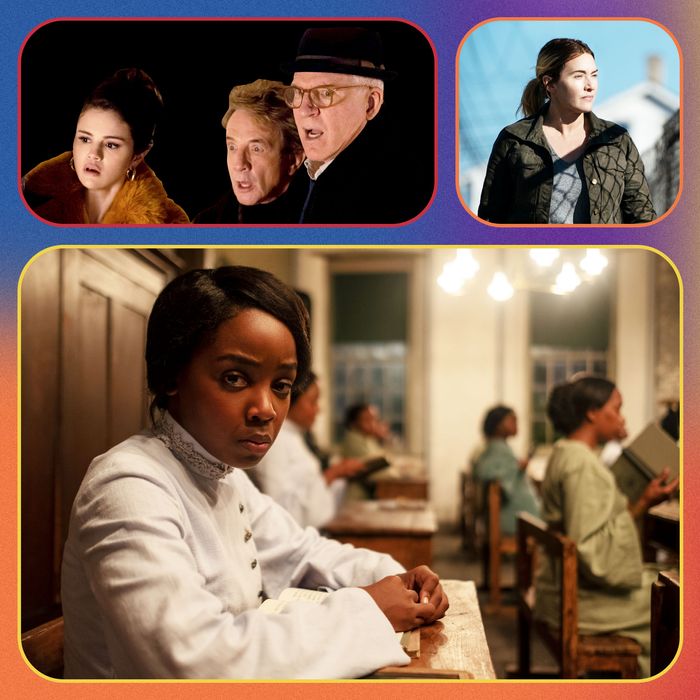
When TV critics compose their lists of the ten best TV shows of the year, what they’re really doing is identifying a group of breakthrough cases — not in the COVID-19 sense, but rather a creative one: Networks and streaming platforms are so crowded with viewing options that a series needs to do something daring, unusual, or too compelling to be ignored in order to really stand out. If it can pull off all three, even better.
These were the kinds of stories from 2021 that the critics from Vulture and New York Magazine attempted to single out, from Reservation Dogs, the vibrant dramedy about life in an Oklahoma Native American community that landed on all four of our professional TV junkies’ lists, to The Underground Railroad, a powerfully filmed adaptation of Colson Whitehead’s novel, also a four-peat among this group. There was divergence among our experts, too, with love being shown to brutally funny satire (The Other Two), animated masterpieces aimed (technically) at children (City of Ghosts), exquisite sports documentaries (We Are: The Brooklyn Saints), and thoughtful horror that raises existential and spiritual questions (Midnight Mass).
What every selected series has in common is an interest in pushing the boundaries of the medium forward. And as we head into 2022, Vulture is moving forward as well: Matt Zoller Seitz is stepping away from TV criticism and taking on a new role as a features writer, while Roxana Hadadi joins the staff as a TV critic alongside Jen Chaney and Kathryn VanArendonk. All four of them provide their favorites of the year below, with the hope that several of their choices will break through with you, too, if they haven’t already.
Jen Chaney’s Top 10 Shows
10.
Reservation Dogs (FX on Hulu)
Critics and viewers toss around the phrase, “There’s no other show like this on television” more than they should. But this time it’s actually true. Reservation Dogs is not like any other show on television. Not only does it depict a setting that very rarely garners attention — an Indian reservation in Oklahoma — it introduces us to characters who seem real, fully formed, and idiosyncratic, not because their eccentricities were invented by writers huddled in a room on an L.A. studio lot, but because they somehow already existed. It’s as if the core friends in this series — Elora (Devery Jacobs), Bear (D’Pharoah Woon-a-Tai), Cheese (Lane Factor), and Willie Jack (Paulina Alexis) — were living out in the world and cameras finally showed up to find them. It helps enormously that Sterlin Harjo, who co-created the series with Taika Waititi, is a Native American who also grew up in Oklahoma. He knows his stuff and this place, and uses that knowledge to build a first season that’s part coming-of-age comedy, part exploration of grief, and part testament to the fact that having a dream can serve as important therapy. The main characters scheme to move to California for the whole season, and there’s something beautifully Wizard of Oz-ian about the fact that a tornado in the season finale makes some of them wonder if actually, there might be no place like home.
9.
Work in Progress (Showtime)
In a year when a lot of shows tried, often unsuccessfully, to evoke the weird despair of pandemic life, Work in Progress did an exceptional, under-the-radar job of doing just that. The second season of this Showtime gem — focused on Abby (co-creator Abby McEnany), a self-proclaimed queer dyke who also struggles with her mental health — begins with Abby’s quest to find a new therapist (she dumps one after he says, “for all intensive purposes”) and deal with her guilt after shouting her ex’s deadname during an emotional break-up. Those concerns are threaded into the second half of the season when Covid creeps in, raising Abby’s already high anxiety and forcing her to reckon with family and other shortcomings. This all sounds pretty heavy for a series that is ostensibly a comedy, but Work in Progress wrings humor out of thorny issues. The highlight of the season, an episode called “FTP,” finds Abby struggling with an assignment to write a corporate statement about racial justice during the George Floyd protests, and simultaneously acknowledges the bullshit inherent in that process — “Sorry for the redlining. OUR BAD,” begins one of her ditched drafts — and Abby’s earnest desire to be a better ally. Life during the pandemic is messy, and Work in Progress, with its flashbacks and occasional fantasy sequences, openly acknowledges that mess in a way that evokes laughter and an appreciation for humanity. It’s a comfort that is not afraid to deal with the uncomfortable.
8.
The Underground Railroad (Prime Video)
Emmy Award voters have been known to make some misguided choices, so it shouldn’t be surprising when it happens. And yet I remain baffled by the fact that Barry Jenkins did not win an Emmy this year for directing The Underground Railroad, one of the most purposeful, ambitious visual works to appear on our televisions in 2021. Based on Colson Whitehead’s novel, The Underground Railroad takes a cross-country journey with Cora (an intensely focused Thuso Mbedu), a slave who flees Georgia and bounces from state to state in search of permanent freedom and peace. Along the way, Jenkins captures imagery that ranges from gorgeous to brutal. This is a story about slavery that is unflinching when depicting cruelty and racism, but also captures the full dimensions of Cora and those in her orbit. Throughout Underground Railroad, Jenkins pauses to capture tableaus of Black men and women, frozen for a moment in time, staring directly into camera and demanding to be seen for who they were: not just victims of a shameful, disgusting system, but complete human beings containing multitudes.
7.
Hacks (HBO Max)
Hacks is a show about a well-known stand-up comedian, but its comedy is not rooted in stand-up. The laughs on this cleverly written, cross-generational character study come from the interactions and conflict between Deborah Vance (Jean Smart), the industry vet with a set gig in Vegas, and Ava Daniels (Hannah Einbinder), a semi-disgraced TV writer who gets roped into writing jokes for Deborah. The dynamic between Einbinder and Smart crackles with love-hate energy as they approach and retreat from vulnerable places together. Co-creators Paul W. Downs, Lucia Aniello, and Jen Statsky, along with their fellow writers, slide in some very funny scenarios — see: Ava going all the way to Madame Tussaud’s to unlock Deborah’s cell by using her wax statue for facial recognition — and some great one-liners and zingers. (A favorite, from Ava: “Everyone in L.A. has such great style. I can’t tell who’s Haim and who’s just three people.”) But as valuable as the writers and everyone in the cast is, Hacks simply would not work if Smart weren’t as convincing and commanding as she is. Given the caliber of her work in the past few years alone, it’s saying a lot to call this the best work of her career. But it is. Her performance takes an already really good show and makes it something that should not be missed.
6.
Evil (Paramount+)
This horror/crime procedural/spiritual examination from Robert and Michelle King was easily the weirdest show on broadcast television when its first season aired on CBS. For its second season, it got moved to Paramount+, where it became one of the weirder shows on streaming, in the best possible way. Evil took some wonderful, wild swings this year: rolling out a genuinely creepy episode about an elevator game that can send players to Hell; casting Andrea Martin as a nun who doesn’t put up with bullshit; setting an episode at a monastery where a vow of silence has been taken, and letting it play out with very little dialogue; including a storyline that was a barely veiled critique of Amazon’s labor practices. The pleasures in this series are boundless, and they definitely include all four of the constantly jabbering daughters of Dr. Kristen Bouchard (Katja Herbers) and literally everything Michael Emerson is doing in the role of Leland Townsend, the show’s villain who is definitely doing the devil’s work and, also, the most. Emerson is always good, but in this season of Evil he acts his face off. It’s true: In every episode, he would act his face off, then he’d get a new face and act that one off in the next episode. Don’t believe me? Just watch.
5.
Mare of Easttown (HBO)
Plenty of viewers got hooked on Mare of Easttown because they wanted to know who was responsible for the death of teen mom Erin McMenamin (Cailee Spaeny). But while the crime aspects of this series are certainly compelling they aren’t what make it such a singular show. Creator and writer Brad Inglesby is more interested in other mysteries, like the source of the fissures in detective Mare Sheehan’s (a superb Kate Winslet) emotional façade, the nature of the intricate connections between the residents of this small Delaware County, Pennsylvania town, and how mothers cope with losing, in various ways, their bond with their offspring. Mare of Easttown is technically a drama, but it contains many moments that suggest it’s actually a sitcom starring Winslet and Jean Smart as her mother. That sitcom is one of the best ones that appeared on TV this year. With its rich, palpable setting and sterling performances top-to-bottom — thank you, Kate Winslet, for your accurately rounded O’s — Mare of Easttown wasn’t a show you watched. It was a place where you lived for one hour, every week, until its shattering finale was finished.
4.
WandaVision (Disney+)
As this year comes to a close, some of us may be feeling a bit of MCU fatigue. But think back to the beginning of this year and the spark of joy WandaVision ignited when it arrived on Disney+. As the first Marvel series on the platform, it seemed poised to be a more episodically driven Xerox of a Marvel movie. Under the supervision of showrunner Jac Schaefer, there was a slight taste of the usual Marvel. The scenes set within S.W.O.R.D.’s operation and the storyline connections to the Blip from the Avengers films made it clear which franchise we were watching. But by having Wanda (Elizabeth Olsen) cope with her grief over the loss of Vision (Paul Bettany) via an existence that reinvented them as sitcom characters from various eras, WandaVision emerged as one of the more surprising, accessible, funny, and thoughtful pieces of “content” that the multiverse has ever produced. Game performances by Olsen and Bettany, Kathryn Hahn’s winking, fierce turn as Agatha, Agatha’s infectious earworm of a theme song, and some other surprises — why, what are you doing here Evan Peters? — made this the first must-watch show of 2021 and one worth returning to in the years ahead.
3.
The Other Two (HBO Max)
If anyone still believes that working in the entertainment industry is a nonstop limo ride to Glamour Town — at this point, I am not sure why anyone would believe that, but just work with me here — then The Other Two will absolve them of that notion in five minutes or less. After a two-year wait due to the pandemic, the second season found siblings Cary (Drew Tarver) and Brooke Dubek (Heléne Yorke) achieving a tiny bit more success in their chosen fields. (Cary’s an aspiring actor, Brooke a talent manager). But every step forward comes with a new set of indignities to deal with, like getting stuck on conference calls outside of Vogue parties, recording Cameo videos, being publicly called out by people you unfollowed on Instagram, or inadvertently gaining fame when a Grindr dick pic with your face in it is accidentally leaked on social media. This last thing happens to Cary in episode nine, and it made me laugh so hard I was weeping. Even the most successful Dubek, Cary’s and Brooke’s talk-show-host mom Pat (a sincerely corny Molly Shannon), finds the grind to be a bit much. In one great bit, Pat gets in the car that’s supposed to take her home at the end of a long day, only for it to move a few feet, then drop her off so she can get right back into make-up. The Other Two benefits enormously from its cast of comedy pros — in addition to Tarver, Yorke, and Shannon, Ken Marino and Wanda Sykes are standouts — but enormous credit must go to creators Chris Kelly and Sarah Schneider and their hilarious fellow writers, who satirize the New York celebrity and media world with such authority that every joke becomes an arrow piercing its intended target.
2.
The White Lotus (HBO)
There are a lot of metrics critics can use to determine which shows wind up on their top-ten lists. But the truth is that what puts one series in, say, the No. 6 spot vs. No. 2 or 3 is a little arbitrary. One consideration I take into account is: How quickly did I want to devour the episodes? In this case the answer is: really fast. I couldn’t stop myself anymore than Shane (Jake Lacy, finally getting to play the asshole-next-door) can stop himself from obsessing about why he and his new wife, Rachel (Alexandra Daddario), were booked in the Palm Suite instead of the Pineapple Suite. Written and directed by the observant Mike White specifically because HBO wanted a show that could be shot safely in a quarantine bubble, White Lotus emerged as a sharp indictment of white privilege and a darkly comic illustration of the gap between those who work hard for what little they have (the hotel staff) and those who have a lot and don’t seem to work super-hard for it (the hotel guests). The limited series is filled, tropically decorated wall to tropically decorated wall, with great performances, including a stand-out turn from Jennifer Coolidge as the mourning, oblivious Tanya McQuoid that reminded everyone how amazing Jennifer Coolidge is. While the ending was a bit too pat (unless, you know, you interpret it my way), every other moment in The White Lotus was rich with comedy, fascinating character dynamics, and reminders that no matter how much money you have or how far you travel, there is no way to take a vacation from your terrible, narcissistic self.
1.
We Are Lady Parts (Peacock)
Why is this British series about an all-female Muslim punk band at the top of this list? For a lot of reasons, but two that really pushed it into the No. 1 spot: I recommended it to more people in 2021 than probably any other TV offering, and because it’s the show that made me happiest this year. And pure, simple (albeit fleeting) happiness felt like a precious commodity in 2021. The economy of storytelling in We Are Lady Parts is one of its many elements that are worthy of appreciation: In six roughly 25-minute episodes, creator, writer, and director Nida Manzoor introduces us to Amina (a thoroughly charming Anjana Vasan), a microbiologist who is eager to get married and secretly plays a mean guitar, in addition to the manager and three members of the band she eventually joins, Lady Parts, and makes us feel completely invested in every one of them. Each of them are Muslim and collectively they represent the kind of ethnic diversity within that community that often is not reflected on television: These are women who wear hijab, who pray regularly, who have romances with other men and women, and who can rip out an absolute corker of a cover of “9 to 5” when the moment calls for it. Every one of them is gorgeous and real and the opposite of a stereotype. On top of all that, the music in We Are Lady Parts, co-written by Manzoor, is legitimately fun and clever, so much that you’ll be adding it into your regular Spotify rotation. (At least as I did.) My only complaint about this series is that I do not have more of it to watch. I also don’t have footage of myself watching the episodes of We Are Lady Parts, but if I did, I know what it would contain: me, watching my television with a grin stretching from one ear to the other.
Kathryn VanArendonk’s Top 10 Shows
10.
For All Mankind (Apple TV+)
The shape of For All Mankind’s second season is almost retro. Fifteen years ago, the slow-burn hourlong drama that puts all its pieces in place and then gradually builds to an explosive final two episodes was the de rigueur storytelling model. It’s fallen by the wayside in the last few years, given over to an increasingly Netflixified algorithmic story glop. It makes a TV season as controlled, patient, and ultimately outright gangbusters as For All Mankind’s second one feel like an unusual treat. It is bolstered by excellent performances, especially from Michael Dorman, Wrenn Schmidt, Krys Marshall, and Sarah Jones, but the real delight is the unparalleled narrative acceleration toward the end. Two characters [redacted] on the [redacted]! Wearing only [redacted]! It took me hours to recover.
9.
You (Netflix)
After two seasons of promising but messy stalker drama, the third season of Netflix’s You hits with full force. With more complex motivations and more effective narrative foils, Penn Badgley’s Joe Goldberg finally gets an exterior fictional world to match the nightmare palace inside his brain. Serial killer Mr. and Mrs. Smith but with childcare issues is a winning combination on its own; with the addition of Shalita Grant as a nosy, freaky, type-A mommy blogger, You goes from good to outstanding.
8.
Succession (HBO)
Increasingly in its third season, Succession is a series about the frustration of stasis. The unconscionably wealthy Roy family are locked in a battle for the control of their maybe-collapsing media empire, and the teetering sense that everything might be on the verge of implosion has now hardened into a familiar, exhausting circularity. Nevertheless, there are few shows that are this good at running in place. The tragedy of the Roy children’s shared emotional stuntedness is a well of black humor the show has not yet depleted, and its dedication to depicting extreme wealth in the grimmest light imaginable continues to pay off. This season is also notable for the excruciating sadness of the family court jester, Tom Wambsgans (Matthew Macfadyen). The rest of the Roys carry out their ping-ponging games of power, and meanwhile Tom is on a plummeting downward trajectory, no longer able to prop up the façade. Tom keeps season three from losing sight of the consequences.
7.
City of Ghosts (Netflix)
Truly special TV for elementary-age kids is rare, so rare that it’s almost hard to believe a show like City of Ghosts exists in the same category and came from the same platform as the vast uninspired landscape of so much of Netflix’s other original animated children’s programming. This series is truly a gem: gorgeous and distinctive animation, beautiful voice performances by actual children (which makes an enormous difference), and a point of view that extends so much further than the usual “just be yourself!” or “sharing is caring” kids messaging. City of Ghosts is about urban history and personal narratives, and it is every bit as moving for adults as it is for children. Its lone flaw is that it’s only six episodes long, and it is a tragedy that Netflix has mostly ignored it.
6.
Dickinson (Apple TV+)
The winking modernity of Dickinson can create a misleading impression of slightness, especially given the Apple TV+ show’s emphasis on Emily Dickinson’s younger years. You hear Emily and her Amherst cohort slide internet-y language into their exchanges; the contemporary needle drops and heavy dashes of surreality make it seem like the show is undermining its protagonist’s legacy as a solemn, even inhuman cloistered genius. What the show’s third and final season makes clear, though, is that two things can be true at once. Dickinson’s light, joyful, sometimes supremely snide treatment of its historical moment (and of our current one) gives the series buoyancy and distinction. But this final season turns even more toward all the things that’ve loomed from the beginning: death, calamity, and crisis. Its careful hold on the humor only deepens its depictions of grief and longing. (Plus, it has the best guest-casting game on TV.)
5.
All Creatures Great and Small (PBS Masterpiece)
There is no misstep in the entire first season of All Creatures Great and Small. Not a one. The BBC/PBS Masterpiece adaptation of James Herriott’s rural veterinary books was basically guaranteed to be a nice time, at the very least; the book series is an unmatched accomplishment in the territory of sentimentality anchored by the inexorable physical realities of life. Still, it is rare to find an adaptation quite this exquisite. Every beat of it is considered, every sweater and muddy puddle and recalcitrant-looking hog is filmed with care. Most importantly, the performances by Nicholas Ralph, Anna Madeley, and Samuel West keep the whole thing from swerving into overwrought sweetness. It is one of the few series I watched multiple times this year, wishing somewhere there was another episode hidden I hadn’t yet seen.
4.
Philly DA (PBS)
What was just a few years ago an exciting new energy behind the TV docuseries boom has since turned slightly sour. More and more of the new releases are slipshod or underbaked, and some are out-and-out appalling. The upside is that the explosion of the field has made it even easier to see what a stellar docuseries can be, and there is no better example in the last year than Philly DA. It is long but it’s also finely wrought, a measured and wide-ranging look at progressive Larry Krasner’s first year as the Philadelphia district attorney that avoids the pitfalls of hagiography or oversimplification. The cinematography is thoughtful, and the editing is done with an eye toward retaining momentum, but the primary achievement here is its success as a form of portraiture. If only more docuseries were made with such diligence and grace.
3.
The Underground Railroad (Prime Video)
Very little television — very little art, more broadly — has Underground Railroad’s arresting combination of urgency and stillness. Few moments on Underground Railroad are not motivated by palpable tension, whether it’s the immediate stakes of an enslaved person terrified of being captured, or the more abstract, shifting tension of Cora (Thuso Mbedu)’s continual reaching toward different visions of a free life. What makes Underground Railroad feel so distinct, though, is how intensely it insists on moments of pause. It invites the viewer to experience the characters’ gaze, to see the characters beyond their too-simple symbolic meanings. What could’ve been a headlong race through trauma and terror becomes meditative and contemplative.
2.
Reservation Dogs (FX on Hulu)
By its second episode, Reservation Dogs is clearly something remarkable. The show, about a group of four Indigenous teenagers in Oklahoma, has to set a lot of scenes in its first episode, and there’s a slightly misleading momentum. The kids steal a chips van; they are mimicking the cool unflappability of Tarantino’s Reservoir Dogs; the series has to build in their dead friend, their families, their friendship. In episode two the show finds itself, as Elora (Devery Jacobs), Bear (D’Pharaoh Woon-A-Tai), Cheese (Lane Factor), and Willie Jack (Paulina Alexis) try to reclaim the excitement of their heist and instead get mired in the bureaucracy of a reservation health clinic. By the time Reservation Dogs gets to the end of its eight-episode season, it is not just special but almost miraculous: funny, devastating, full of magical realism and gorgeous, mundane simplicity.
1.
Station Eleven (HBO Max)
For so many reasons, Station Eleven should be a disaster. It is an adaptation of a pandemic novel at a time of peak pandemic exhaustion. It skips around a timeline, uninterested in signposting its way through the complicated, oblique connections between characters. It’s laden with metaphor, in a way that could easily feel overbearing. Station Eleven works because it never loses the core of its conceit: that humor and art still matter even after the world collapses, and that the crisis of a faltering friendship feels just as big as an extinction event. Station Eleven is created by Leftovers alum Patrick Somerville, given visual shape by director Hiro Murai, and anchored by incredible performances from Mackenzie Davis, Himesh Patel, Danielle Deadwyler, and Matilda Lawler. Nothing else this year captured how strange it has felt to be alive right now; to encompass that sensation and then push it beyond the strangeness, into something almost like … optimism? It feels like a gift.
Roxana Hadadi’s Top 10 Shows
10.
Reservation Dogs (FX on Hulu)
Not for one moment does Reservation Dogs let viewers forget that America is a stolen country; that the legacy of that theft is systemic inequality; and that not everyone makes it out from under. Creators Sterlin Harjo and Taika Waititi and their nearly entirely Indigenous slate of writers, directors, cast, and crew know exactly what they want to say about lives shaped by lacking and longing, and they aren’t precious about genre boundaries in doing so. They ground their series on the Muscogee Nation, giving it an unassailable sense of place, and allow the dramas, frustrations, and desires of four teens to sprawl forward. Devery Jacobs, D’Pharaoh Woon-A-Tai, Lane Factor, and Paulina Alexis stand tall amid heist high jinks, fantastical elements honoring Indigenous beliefs, and domestic dramas that capture the frustrations of reservation life. Every episode is a half-hour ricochet between sardonic humor and wounded vulnerability, and the questions Reservation Dogs raises about what, or who, defines a home are pointed and poignant. (One of its most obvious blind spots, the absence of Black Native people, should hopefully be addressed in season two.)
9.
Only Murders in the Building (Hulu)
An array of aesthetic delights populate Steve Martin and John Hoffman’s mystery-comedy series: those Pedro Almodóvar-like interiors in multimillion-dollar apartments (ornate wallpaper, velvet furniture), a perfectly straight line of Hardy Boys hardcovers, Selena Gomez’s outfits (so many chunky boots!), the fluffiness of a perfectly cooked omelet. These luxuries exist in stark contrast to the series’s grisly narrative about murders, thievery, cover-ups, and the crime that is luxury condo fees in New York City, but the series’s light touch in pairing these concepts together is what makes Only Murders in the Building so persistently watchable. The series is less insightful about true crime and media culture than it is broadly observational, but those somewhat obvious interpretations go down easy when they’re complemented by Siddhartha Khosla’s playful score or delivered by faces as elastically expressive and as eager-to-please as Martin’s and Martin Short’s. Is anything this year funnier than Short’s exuberant digging into yet another tub of hummus, or Martin’s akimbo body getting gently closed upon over and over by a pair of elevator doors? Hard to say.
8.
Midnight Mass (Netflix)
Admittedly, people sitting in a room, talking in real time, does not always equal compelling television. And if those people are talking about something as personal as religion, spirituality, or faith — well, that might require even more patience to watch, depending on a viewer’s level of belief. But Midnight Mass makes that stillness worthwhile thanks to an array of exceptional performances, especially those of Hamish Linklater and Zach Gilford, and a commitment to diving deep into questions about selfhood and community that require space to unfurl. Between The Haunting of Hill House, Doctor Sleep, and Gerald’s Game, Mike Flanagan’s ability to creatively adapt horror framing while exploring the crevices and crevasses of grief is well-established. But Midnight Mass also dares to imagine a world bound together by clemency rather than judgment, which is sometimes the most courageous act of all. (Plus, an interior life for Rahul Kohli’s Muslim sheriff!) The final minutes of episodes “Book V: Gospels” and “Book VII: Revelation,” with their focus on sacrifice and camaraderie, are moving enough to make up for the series’s previous self-indulgence and still-precious refusal to say the word “vampire.”
7.
Gangs of London (AMC)
Gareth Evans is an impresario of excess, and in Gangs of London, the director and writer builds an operatic tragedy that amps up familial betrayal as much as it sprays out gushes of blood. In general terms, this is familiar stuff: The head of the crime family that runs London is killed, and son Sean (Joe Cole, perpetually hotly brooding) plans to step up into his place. But where Gangs of London deviates from a typical “white guy figures it out, is fine” narrative framework is in how it surrounds Cole’s Sean with a coalition of compelling character actors from various racial, ethnic, and national backgrounds. Their legitimate challenges upon his assumed authority provide an opportunity for widespread character development, and so performers like Lucian Msamati, Sope Dirisu, Ray Panthaki, Narges Rashidi, and Asif Raza Mir each get the opportunity to glower and scheme, plan and betray. They all come together in an endless forward march of gnarly, nasty, and impossible-to-look-away-from fight scenes and action sequences, a parade of grotesquerie and ambition, and a veritable symphony of rattling bullet casings, obliterated bones, and squelching flesh. Watching is recommended; eating before watching (especially before the standalone siege episode), not so much.
6.
For All Mankind (Apple TV+)
Joel Kinnaman’s anguished face is very appealing to me, and I still repeat “Hey yo, Linden!” every time he appears on screen in For All Mankind, a full decade after The Killing. But my significant interest in the former Stephen Holder is not solely what lands For All Mankind on this list; instead, the series’ full-throttle immersion into its alternate-history experimentation is the deserving factor. In its first season, For All Mankind felt somewhat tentative in its imagining of how the world would change if the USSR had gotten to the Moon first, with the series primarily exploring the narrative possibilities of NASA pursuing a female astronaut program (similar to the real-life Mercury 13). But in its second season, all those seemingly slow character arcs and all that deliberate subplot maneuvering pay off as the series introduces a medley of emergencies. The season finale is a wonderfully bonkers balance — Russia attacks the U.S. base on the moon, nuclear-attack alarms go off on Earth, astronauts attempt the Apollo-Soyuz docking — but it also offers up intimate, fragile moments between characters in love, in competition, and in crisis. And a time jump leading into season three? Hey yo, that’s audacious (and maybe a little like The Americans, which is never a bad thing).
5.
I Think You Should Leave (Netflix)
“I don’t even want to be around anymore.” Same.
4.
The Underground Railroad (Prime Video)
Prime Video fumbled the bag on The Underground Railroad release strategy. Here is a show that needed weekly gaps to let each episode, in its glory, grandeur, agony, and epic scope, be absorbed by viewers. To let the visuals composed by director and writer Barry Jenkins and cinematographer James Laxton pulse and simmer: Thuso Mbedu’s Cora as she tumbles down into the shadowy darkness of the series’s literalized tunnel; a drowning attempt that almost takes on a baptismal quality; the cracking of the whip and the faces of the person being abused, the person doing the abusing, and the people blandly watching so much cruelty, not even entertained or thrilled by it, just accepting that this is what has always been, and what always should be. The violence of this kind of story, about the moral decay of racism and white supremacy as America’s policy, lifestyle, and ideology, is central to Colson Whitehead’s original novel. But there is humanity and companionship, too, and Jenkins, as is his custom, centralizes the desires and demands of these characters by having them stare directly into the camera, their gaze turning back on ours. The meditation of that movement, and how it complemented so much else that was contemplative and subversive about The Underground Railroad, deserved a better unveiling than it received.
3.
Mare of Easttown (HBO)
The “dead white girl” trope is a pervasive one in crime drama, and Mare of Easttown centralizes that TV commonality in a way that isn’t exactly unique: abusive father, deadbeat ex-boyfriend, single motherhood, bills to pay, economic aimlessness. But Brad Ingelsby’s series then took a step back and swapped our perspective, placing that lost young woman in the small-town ecosystem that ignored her pain, unhappiness, and legitimate worries about the future. Only someone of this place, and aware of its stifling potential, could become this girl’s champion and her savior, and the ever-vaping Kate Winslet was our lady of whatever comes close to justice these days. From her accent to her glare, from her light flirtation with a wonderfully against-type Evan Peters to her snarling fights with Jean Smart, Winslet’s detective Mare Sheehan was a figure of moral compromise right up until the moment that she wasn’t. No one is a pillar of unblemished ethical certainty, but Winslet’s performance found the rawness in love and the defensiveness in loss. Ingelsby indulged in the puzzle-piece clue-stacking of a murder mystery, but the earthiness Winslet brought to the series wound it tightly around herself. With its final message of self-forgiveness, Mare of Easttown showed us the peace in letting go.
2.
The White Lotus (HBO)
The White Lotus was never really a story about the haves and have-nots. It was about the glimmering webs of power and wealth shielding the former and how they grow not more fragile with time, but more ensconced, more calcified, and more toxic. Everyone on The White Lotus is grasping for what they think they deserve, what they think they’ve earned, and whether that’s the resort’s Pineapple Suite, a spa manager at their beck and call, or a second chance at love, all those options add up to so much emptiness. Consider the resort’s beauty when no one is awake yet, when we can forget the ways in which we pollute the world a little bit more every day with our presence. Mike White’s depictions of destruction and negligence by the one percent, portrayed with white-guy vapidity by the likes of Jake Lacy and Steve Zahn, ferocious cynicism by Sydney Sweeney and Molly Shannon, and genuine woundedness by Alexandra Daddario and Jennifer Coolidge, rankle and enrage. So too does the casual crushing of characters played by Murray Bartlett and a never-better Natasha Rothwell, who hover on the outskirts of so much exclusivity and are reminded time and time again that capitalism does not allow for fulfillment through labor. Economic inequality is a crushing wave, and the sharply written and universally well-acted The White Lotus, with its petty feuds, savage gossip, and fatal tension, made bleakly clear how most of us are stuck in the undertow.
1.
We Are Lady Parts (Peacock)
There has never been a show like We Are Lady Parts. Watching Nida Manzoor’s series is like being zapped with static electricity, or stepping outside into the sunlight, or getting a full-size candy bar in your Halloween haul: It is unexpected, it is warm, and it is reassuring in its insistence that no matter what happens, listening to your heart is always worthwhile. Both its singularity in subject matter — following the lives of five young Muslim women and punk-rockers in London, and imbuing them with interiority and intersectionality — and its easy movement between genres, between episodic A- and B-plots, and between culturally specific allusions and broadly appealing humor, were signs of the precision of Manzoor’s vision. Manzoor taps into her own experiences to craft this deeply heartfelt portrait of growing up in a sometimes-strict community, attempting to forge your own path, and finding people who are doing the same and will stand alongside you, link arms with yours, and plug in their guitar so you can jam together. The charisma exploding off the screen when Anjana Vasan, Sarah Kameela Impey, Juliette Motamed, Faith Omole, and Lucie Shorthouse scream and headbang along to System of a Down’s “Toxicity” was proof that We Are Lady Parts was something special, and its self-assurance, joy, and F-you attitude were a particular balm in this particular year. Onto season two!
Matt Zoller Seitz’s Top 10 Shows
10.
WandaVision (Disney+)
Although WandaVision started to explain itself halfway through and became a bit more Marvel cookie-cutter toward the end, its first half was fascinating and surprising, and emotionally much more adult than we’re used to seeing from the MCU. The best scenes and sequences channeled classic episodes of The Twilight Zone, where the twist worked and the moral wasn’t quite what you were expecting.
9.
Hacks (HBO)
The best comedy team on television might be Jean Smart and Hannah Einbinder as, respectively, a down-and-out Las Vegas–based comedy legend and a recently canceled comedy writer. Smart about everything, including the fine points of the creative process.
8.
Reservation Dogs (FX on Hulu)
Following the lives of four Indigenous teenagers living on an Oklahoma reservation, this series from Sterlin Harjo and Taika Waititi would be notable for its groundbreaking premise alone, but it’s what the actors, writers, and filmmakers do with it that makes it one for the ages. A delight.
7.
Gangs of London (AMC)
This action/crime potboiler from co-creators Gareth Evans (The Raid films) and Matt Flannery is pitched somewhere between The Godfather and Kung Fu Hustle, interweaving tales of skullduggery among London gangs and bone-breaking, flesh-ripping hand-to-hand combat sequences choreographed by Evans himself.
6.
What We Do in the Shadows (FX on Hulu)
Minute-for-minute, this goofy vampire parody is still the funniest half-hour series in production.
5.
The Great (Hulu)
Theoretically the story of the rise of Catherine the Great (Elle Fanning) as the ruler of Russia, this series from Tony McNamara would pair nicely with Succession, as they’re both opulent, invective-filled epics about the warped values of the powerful.
4.
Succession (HBO)
Jesse Armstrong and Mark Mylod’s half-satirical, half-tragic series about the twisted values of the superrich got dinged in its third season for running in place, but toward the end, the storytelling started to feel retrospectively on point: This is, after all, a series wherein handed-down values are so oppressive that anyone who even thinks of opposing them is sure to get crushed.
3.
Squid Game (Netflix)
South Korean writer-director Hwang Dong-hyuk’s visionary, intensely political series didn’t just mesmerize American audiences, it gave them a new metaphor for their lives under capitalism.
2.
We Are the Brooklyn Saints (Netflix)
Rudy Valdez’s documentary series about neighborhood football teams in working-class Brooklyn is beautiful, not just in terms of its subject matter, but in its look and sound and rhythm: the vibe of the thing. Terrence Malick never made a sports movie, but if he did, it might feel like this.
1.
The Underground Railroad (Amazon)
Barry Jenkins’s epic adaptation of Colson Whitehead’s novel is the most consistently startling and innovative program since Twin Peaks: The Return, conceptually far beyond anything else being made for the medium. The anvil-like clangs you keep hearing in the show’s dense, multilayered sound mix might as well be the sound of TV storytelling’s creative bar being raised.
Other TV Highlights From This Year
Throughout the year, our critics maintained “Best TV of the Year (So Far)” lists. Many of those selections appear above in our top-ten picks. Below are the rest of the shows that stood out to them this year, presented in order of release date.
It’s a Sin
This miniseries from Russell T. Davies, inspired by his own life as a gay youth in ’80s London, does provide all the heartrending, intense tragedy you expect from a drama about the AIDS crisis. The show follows one young aspiring actor (Ritchie, played by Olly Alexander) and his cohort of friends as they gradually discover and are drawn into the AIDS epidemic. Although the arc of their stories will not be a surprise, It’s a Sin finds so much humanity in its characters, and so much shock in the horror of AIDS and the stigma against queer lives, that the story is still fresh and vibrant. The best thing about the series, though, is that it refuses to sacrifice its characters to total tragedy. It’s an indictment of the society that makes them suffer, but it’s also a celebration of their joy. — KVA
Oprah With Meghan and Harry: A CBS Primetime Special
Anyone expecting two hours of uneventful pleasantries from Oprah Winfrey’s conversation with recently defected royals Meghan Markle and Prince Harry was surprised by what this heavily hyped CBS interview turned out to be: a brutally honest, albeit one-sided, peek into what goes on behind closed doors in the royal family. Against the backdrop of an extremely well-manicured Santa Monica backyard, Winfrey politely forced her interview subjects to go into specific detail about the dismissive and at times racist attitudes toward Meghan within the monarchy, and how those attitudes have affected Meghan and the couple’s son Archie. Watching it live, it felt like every second of this prime-time special was generating a new, major headline. But what made the interview such extraordinary television was both the level of candor Harry and Meghan brought to it — they were more blunt and outspoken than even Harry’s mother, Princess Diana, was in her famous 1995 interview with Martin Bashir — and the skillful way that Winfrey steered the conversation, with respectful but firm follow-up questions that gave Meghan and Harry the space to tell their truth on their own terms. — JC
Last Chance U: Basketball
This Netflix docuseries, which previously focused on junior college football, delivers equally intense drama and high emotional stakes by turning its lens on the world of junior college basketball. Following the young men of the East Los Angeles College basketball team and their spiritual, committed coach John Mosley, Last Chance U takes us inside the locker rooms and lives of guys who just missed their shots as Division I players and must claw their way through all kinds of challenges — including grief over lost loved ones and management of their anger — in the hopes of winning a championship and a path back to a major university. What would have been an absorbing season of television under any circumstance is elevated by the specific, unforeseen circumstances that the 2019–2020 season brings. The eighth and last episode of the season will break your heart in ways that few sports documentaries have before. — JC
Top Chef
The best that most long-running TV shows could hope for in 2020 and 2021 was that they could still make television, and that the pressure and restrictions of COVID would not make their shows noticeably worse. For a very few shows, though, being forced to reconsider old habits and rework the baseline status quo resulted in something even better than what has come before, and that has been most noticeable for Top Chef. Some of the changes were big, obvious COVID shifts — restaurant wars became a chef’s table-style meal, and the challenges included events like catering for a drive-in and making meals for essential workers. What was most moving, though, and most effective for season 18 of Top Chef, was the sense that the mood has changed. Contestants were still extremely competitive, but they were also collegial, and open to learning. Challenges that might’ve come off as lip service in an earlier year, like cooking Pan-African cuisine or learning to use Indigenous ingredients, instead felt earnest while also making for beautiful food and great TV. It’s true that the finale has come with a sour twist; nothing is ever perfectly sweet in reality television. But we can hope that season 18 will still be the model for how the show moves forward in the future. —KVA
Everything’s Gonna Be Okay
The first season of Everything’s Gonna Be Okay was lovely but occasionally uneven. At the start, the intimate family comedy about an older brother who becomes the guardian of his two teenage sisters felt a little too beholden to plot. Things needed to happen; there was an impulse to have driving events for its characters to respond to. The second season, which also happens to be one of the most light-handed, careful treatments of COVID on television, fully relaxes into what EGBO does best. It’s a mood, a group of interesting, nervy, imperfect, and loving people who are stuck with one another but who also actively choose to be a family together, every day in every interaction. The series is a really fun, thoughtful depiction of a character who has autism, but its real strength is how it leans into the truth that everyone in the family has their own weird brain things, their own peculiarities and strange desires and flaws. It’s worth watching for all of those things, but the cherry on top for season two is that Richard Kind and Maria Bamford play a regularly appearing married couple. What more could you possibly ask for in a TV show? —KVA
Couples Therapy
Many reality shows have included footage of subjects in therapy, but in most contexts, putting therapy on TV is iffy at best. At its worst, it can be exploitative and gross, and even decent ones tend to be performative. But the docuseries Couples Therapy is sensitive and also endlessly respectful of its subjects — both its wonderful therapist and the many people she helps throughout the series. It does that without sacrificing the intimacy or the very real conflict that makes therapy so fascinating to watch, and the result is a very personal TV show that is engrossing but still full of compassion. —KVA
The Handmaid’s Tale
The series inspired by the 1985 Margaret Atwood novel has often been a bumpy ride, particularly in its uneven second and third seasons. But in its fourth season, The Handmaid’s Tale pushed its narrative forward and gave the audience some payoff — Long-awaited reunions! Escapes! Acts of vengeance! — that they’ve been aching for since season one. The series also turned its thematic attention toward the ramifications of escaping ongoing abuse and trauma, and the process of realizing that getting away is only the first step in a very complicated healing process. The cast continued to do exemplary work, with star Elisabeth Moss, who also directed three episodes for the first time this season, turning in some of the more intense moments in her run as June Osborne. Given how intense this show has always been, that’s saying something. —JC
The Mosquito Coast
A throwback to antihero-driven serialized dramas, this adaptation of Paul Theroux’s 1981 novel concerns a family living off the grid with their patriarch, inventor and anti-capitalist Allie Fox (Justin Theroux, the novelist’s nephew), and ultimately ending up in the Amazonian jungle in a scenario that leads to Conradian darkness. It often plays like Breaking Bad by way of The Americans, getting the Foxes into potentially bad situations, tightening the screws on the audience at each step of their journey, and revealing new aspects of the family’s history and psychology. The direction, writing, and acting reactivate what could’ve been played-out material, connecting Allie’s charismatic bluster to recent history, and linking him to a long tradition of fast-talking, handsome white guys who are invested with authority mainly because Western culture teaches people that this is what a natural born leader looks like. The trail of human wreckage this family leaves during its travels should test the inclinations of viewers whose sympathies tend to flow towards whoever the story happens to be about. And that’s the point. —MZS
Girls5Eva
Really great songwriting is not enough to make a musical-comedy show worth watching, but it helps a ton, and the Meredith Scardino comedy Girls5Eva is absolutely chock full of them. The songs are loaded with perfectly dumb lines — “so what are you waiting five?” — while also being uncannily good takeoffs of the mid-aughts girl group sound they’re spoofing. I think Girls5Eva would be worth it for that alone, but the show lives up to its goofy songs. Renee Elise Goldsberry plays an incredible, absurd diva. Sara Bareilles is great as the slightly off-kilter straight woman. The writing is sharp, and the whole show is both nimble and dense. If you haven’t checked it out yet, truly, what are you waiting five? —KVA
Shrill
This Hulu series about a budding journalist (Aidy Bryant) trying to live her best life has always been on its heroine’s side when she’s been knocked down by unsympathetic bosses, lousy boyfriends, and people who look down on her based on her weight. But in Shrill’s third and last season, co-creators Bryant, Alexander Rushfield, and Lindy West, whose book of the same name inspired the show, challenge Bryant’s Annie to consider her own judgmental-ness when it comes to romance and racism. Bryant is, as always, terrific in a lovely final eight episodes that confirm that the effort to be a better human is perpetually ongoing. — JC
In Treatment
It’s always worth watching Uzo Aduba, in anything. But HBO’s revival of a fourth season of its intense, formally inventive therapy series In Treatment is a remarkable platform for Aduba. She can play her therapist character Brooke’s intense fascination (and occasionally, disgust) with other people, but she’s also a convincing, mesmerizing presence in the episodes when Brooke struggles with insight into her own behavior. The show is strong all the way through, but it’s an especially great platform for Anthony Ramos, who plays one of Brooke’s patients. It’s hard to walk away with any scene anchored by Uzo Aduba, but Ramos absolutely does. —KVA
Master of None
The third season of Master of None bears little resemblance to the previous two. Star Aziz Ansari, who co-created the series with Alan Yang, is very much involved behind the camera; he directed all five of the episodes and co-wrote them with co-star Lena Waithe. But Ansari’s Dev only appears on-camera a few times. Season three really belongs to Waithe’s Denise and her wife, Alicia (played by a superb Naomi Ackie), as they navigate both the banalities and heartbreaks that make a marriage. Deliberately paced and much more intimate, Ansari’s detail-oriented directorial approach pays off in the fourth episode, which focuses on Alicia’s experience with fertility treatment. It’s one of the best episodes that 2021 and Master of None have produced. —JC
Betty
In its second season, HBO’s Betty continues to be like no other show on television, unless you can find another series about female skateboarders, the exploration of gender and sexual boundaries, female empowerment, and the authentic, visceral pleasures of sliding into the nooks and crannies of New York City. Oh, you can’t? Right. Got it. The new episodes take place in the late summer/fall of 2000, so the presence of the pandemic is felt, as is the desire for freedom and connection in an environment dominated by masks, distancing, and lockdowns. The characters in the Betty world remain fascinating, and director Crystal Moselle, who steered the indie film that inspired this series, Skate Kitchen, continues to capture the city in ways that are authentic and recognizable, and that sometimes make it look like a place where gravity no longer exists. — JC
Naomi Osaka
If this docuseries about the ascendant tennis star had dropped on Netflix before Osaka opted out of post-match press conferences at this year’s French Open, a move she made to preserve her well-being, it still would have been a compelling watch. Director Garrett Bradley sensitively and intimately captures Osaka as she attempts to find her footing during her first two years as a legitimate Grand Slam champion, a status that requires discipline, hard work, and constant demands on her time while also fostering insecurity and doubt. “What am I,” Osaka asks at one point, “if I’m not a good tennis player?” As you move through the three episodes, it feels as though you’re moving through the world with Osaka. Watching Naomi Osaka fosters empathy with its subject, empathy that has become that much more important as the public conversation about elite athletics and mental health, via Osaka, Simone Biles, and others, continues to unfold. — JC
Schmigadoon!
Sincere, heart-on-your-sleeve, utterly corny musicals are a polarizing genre. Like cilantro, you either enjoy the flavor, or you experience it as an oppressively soapy nightmare. Schmigadoon! does not transcend the genre it comes from — how could it? It’s born from, obsessed with, absolutely enchanted by Golden Age musicals, and its takeoffs and pastiches of shows like Sound of Music, Oklahoma, and Carousel are faithful, gently teasing copycats. There’s also something magnetic about a show that owns its earnestness. Being trapped in Schmigadoon does seem like a nightmare, but spending six episodes with Schmigadoon! is just lovely. —KVA
Ted Lasso
Sophomore seasons of beloved, breakout new shows offer such a challenge, and the hill was particularly steep for Ted Lasso. Its premise is based on a protagonist whom everyone loves, a beacon of positive masculinity who is warmth and curiosity personified. It would’ve been understandable for a second season of Ted Lasso to just try to repeat what it did before, to skate along on the surface of Ted’s niceness and bring in sources of external conflict to gin up some plot. To its immense credit, season two of Ted Lasso chooses a different path. Where it could’ve dodged, the show instead digs in deep, unwinding the pathologies of Ted’s personality and insisting that no person, not even Ted Lasso, is perfect. It makes an already good show richer and more complex. —JC
The Chair
Netflix’s half-hour dramedy The Chair is many things — probably too many things, and some of them are inevitably given short shrift. It’s an academic satire set in the English department of a not-quite-Ivy university, and it’s full of spiky jabs at the antique faculty members who refuse to retire, the absurd academic red tape, and the university’s fast willingness to sacrifice education for financial support. It’s also a portrait of the newly appointed department chair, Ji-Yoon Kim (played by Sandra Oh), a single mother floundering and often failing to balance her family life with her professional responsibilities. On top of that, The Chair is a series about [clenches teeth] cancel culture, and the changing cultural landscape for clueless white dudes. It’s too many things, especially for a short six-episode season. And yet The Chair is great TV nonetheless, biting off more than it can chew, but attacking it all with curiosity and good faith and stinging humor. —KVA
Impeachment: American Crime Story
Just like the previous two American Crime Story seasons, The People vs. O.J. Simpson and The Assassination of Gianni Versace, this year’s Impeachment chronicles a well-known chapter in 1990s history — specifically the Bill Clinton/Monica Lewinsky scandal that led to the president’s impeachment — but does so through perspectives that have not always been given equal voice in the story. Via the vision of executive producer and writer Sarah Burgess, we see how Clinton’s affairs and Ken Starr’s investigation played out from the POVs of three key women wrapped up in the public discourse around it: Monica Lewinsky (Beanie Feldstein), Linda Tripp (Sarah Paulson) and Paula Jones (Annaleigh Ashford). Even though viewers know many of the details in this highly covered political maelstrom, it’s edifying to watch them woven together with so much empathy for all of these women, such strong performances by much of the cast, and a more critical eye toward the behavior of the president, as well as the Republican conservatives who would become household names during the Trump era. In American Crime Story tradition, this is a season of television that does not merely recount past events, it tells us how those events explain America right now. —JC
Maid
It’s one thing to depict what it’s like to live in poverty. It’s a whole other thing to make an entire audience feel the nonstop stress of being poor. That’s what Maid, the Netflix limited series based on the memoir by Stephanie Land, accomplishes in engrossing, authentically detailed fashion. Margaret Qualley delivers a full, moving performance as Alex, a young mother who takes her 3-year-old daughter and flees an emotionally abusive relationship, then winds up working as a house cleaner who never earns enough cash to cover the expenses that, as a frequent onscreen budget calculator reminds us, never end. While attempting to find a place to live, navigate the government-assistance bureaucracy, fight for custody of her daughter, and keep tabs on her mentally ill mother, played in an unbridled performance by Qualley’s actual mother, Andie MacDowell, Alex does encounter moments of levity and joy. But showrunner Molly Smith Metzler and the rest of the Maid team commit to coating absolutely nothing in sugar. —JC
The Baby-Sitters Club
The first season of the Netflix adaptation of The Baby-Sitters Club was a surprise. It was more assured, warmer, more lovingly made than expected. In its second season, The Baby-Sitters Club is every bit as charming and sensitive as its first several episodes, and it’s even more confident in the treatment of both the central group of girls and their parents and extended families. As a peak Baby-Sitters Club–age kid, I thought one of the best things about Ann M. Martin’s series was that there were so, so many installments to read; the only downside of the Netflix adaptation is that it’s hard not to long for more. —KVA
Yellowjackets
This Showtime series about a 1996 plane crash survived by a girls’ high-school soccer team and the impact the accident still has on these women years later is a complicated cocktail that mixes multiple genres. It’s a Lost-esque plane-crash survival story, a ’90s coming-of-age drama, a mystery-box thriller, and a character study of women in middle age. The more Yellowjackets progresses, the more its multiple mysteries will draw you in, as will the performances from well-known actors (Melanie Lynskey, Christina Ricci, Juliette Lewis, and Tawny Cypress) and their talented, younger counterparts (Sophie Nélisse, Samantha Hanratty, Sophie Thatcher, Jasmin Savoy Brown, and Ella Purnell). The ’90s needle drops on the soundtrack may win you over, but don’t misunderstand: Yellowjackets is about, among many other things, how dangerous it is when we can’t unwind ourselves from the past.
Pen15
Middle school is often brutal and sometimes bittersweet. So are the final eight episodes of PEN15, one of the most unflinchingly cringey portraits of adolescence that has ever existed on television, brought to you by two women in their 30s persuasively portraying 13-year-old girls. As their younger counterparts, Anna Kone and Maya Ishii-Peters, Anna Konkle and Maya Erskine, who co-created this series with Sam Zvibleman, have always managed to tap into every vein of angst, insecurity, and goofiness that runs through preteenhood as if they are still living it. In the final eight episodes of the Hulu comedy, they do it with an extra degree of poignance and honesty that makes this curtain call a must-watch, particularly its finale, which will break your heart from multiple angles. Love U 4 Eva, Mai and Na. —JC
More From This Series
- What’s the Most Memorable TV Moment of 2021?
- The Best TV Trees of 2021
- The First Annual Golden Dolly Awards


